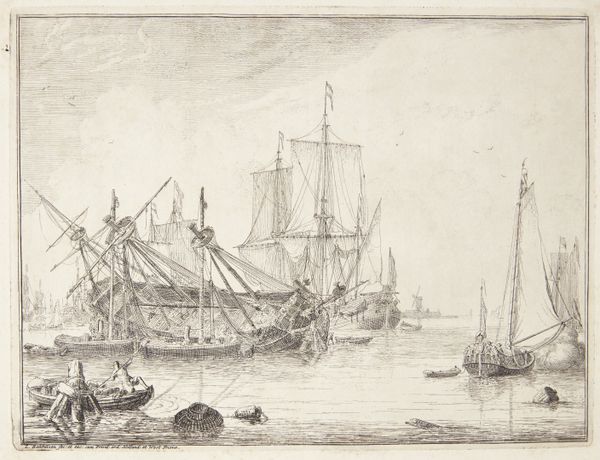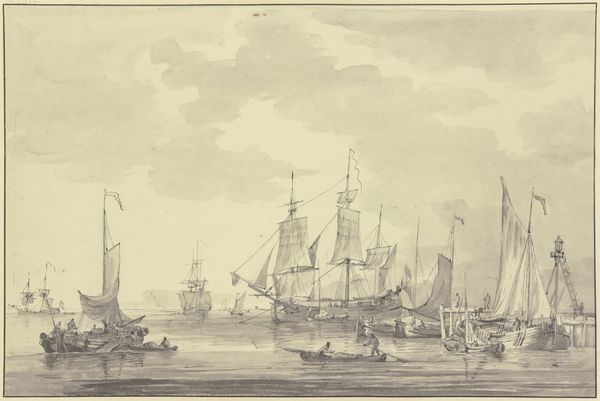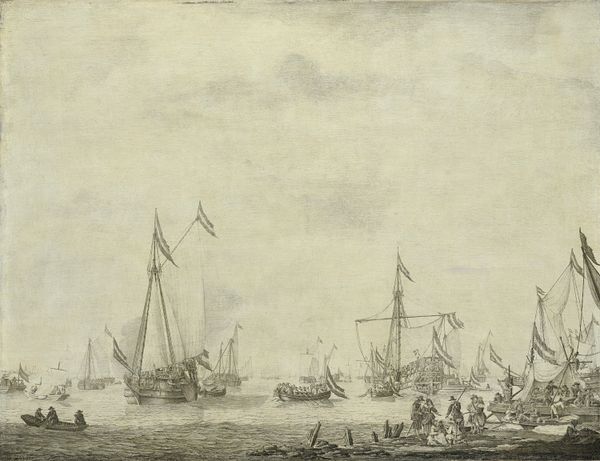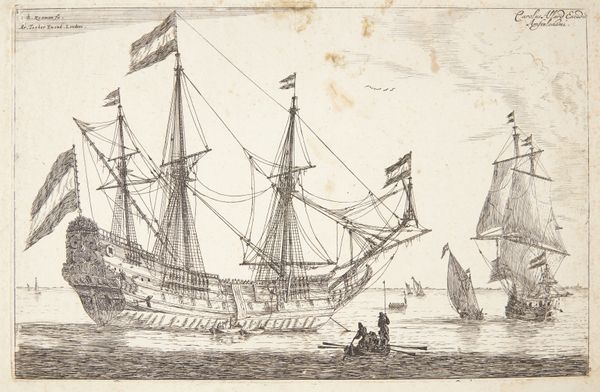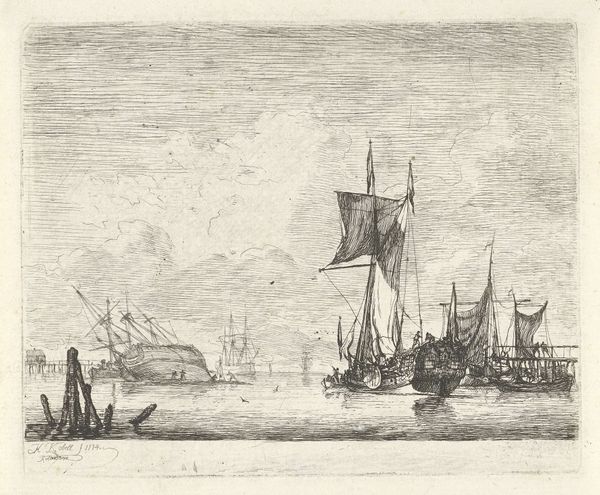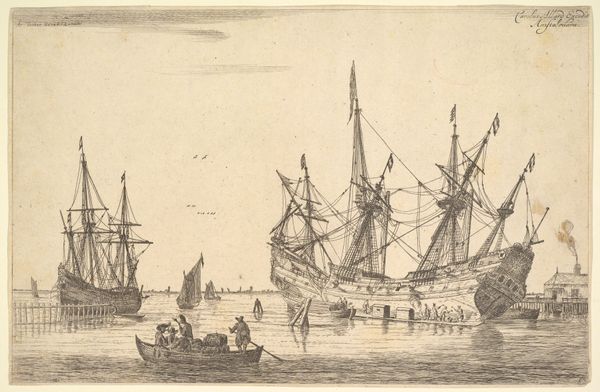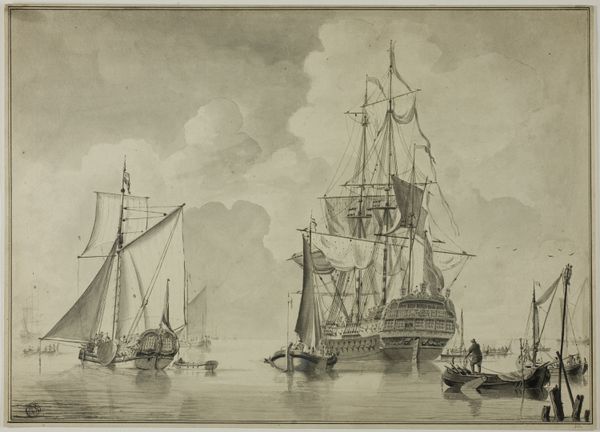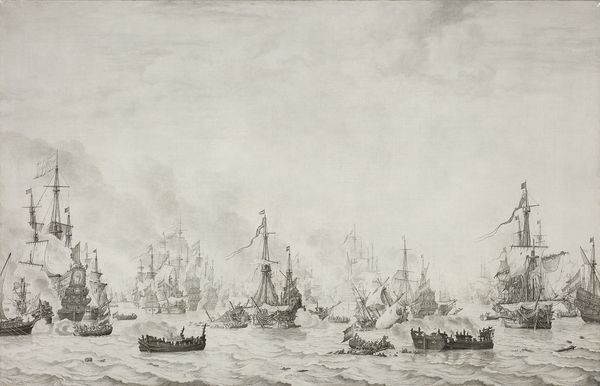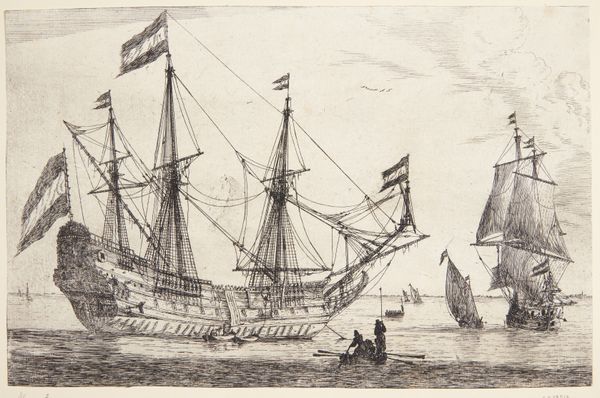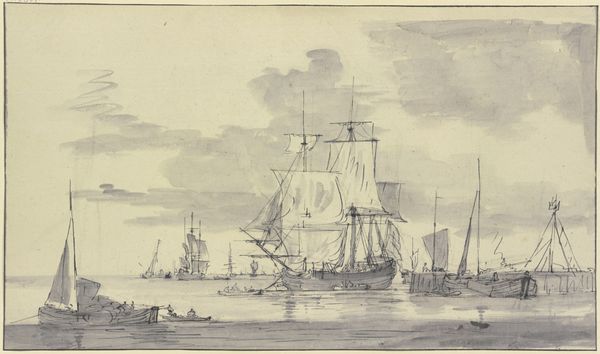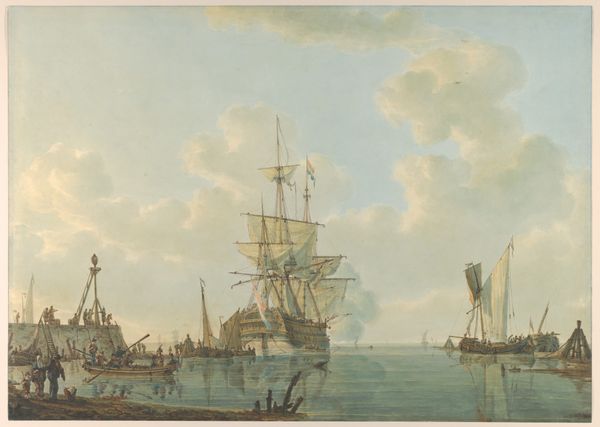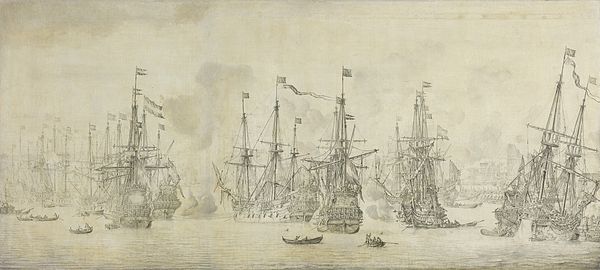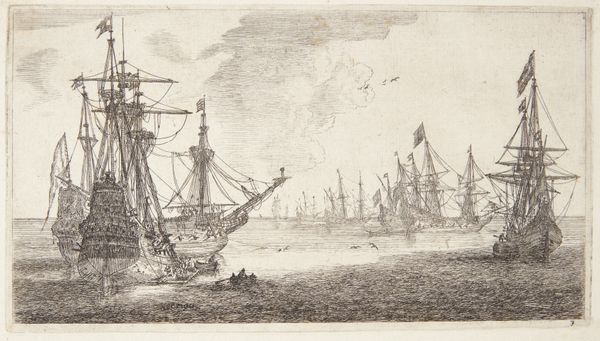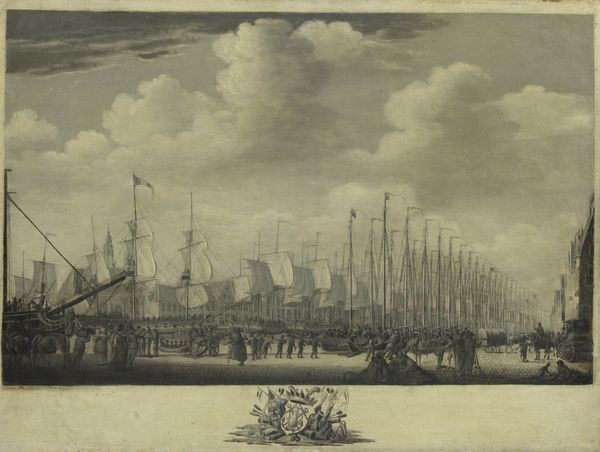
drawing, print, paper, ink, pencil
#
drawing
#
narrative-art
#
dutch-golden-age
# print
#
pencil sketch
#
landscape
#
charcoal drawing
#
paper
#
ink
#
pencil
#
cityscape
Dimensions: height 84.1 cm, width 114.5 cm, thickness 3.5 cm, depth 8.7 cm
Copyright: Rijks Museum: Open Domain
Willem van de Velde the Elder made this pen painting of ships after battle, but the exact date is not known. It portrays vessels from the 17th-century Anglo-Dutch wars, a period of intense naval conflict driven by economic rivalry and colonial expansion. Looking closely, we can see the visual codes of maritime power, the flags, the detailed rigging, all speaking to the dominance of the Dutch Republic on the seas. But what does it mean for the artist to show them after battle? Is it an attempt to comment on the costs of war, or is it an image designed to serve the state through celebration of its powerful navy? The Dutch Golden Age was driven by powerful merchant classes, so images of ships were incredibly popular at this time. Van de Velde and his son were even employed by the English Royal court to make similar images after they moved to England. By consulting historical records, naval archives, and the artist's biography, we can better understand the cultural and political context that shaped the artwork's creation and reception.
